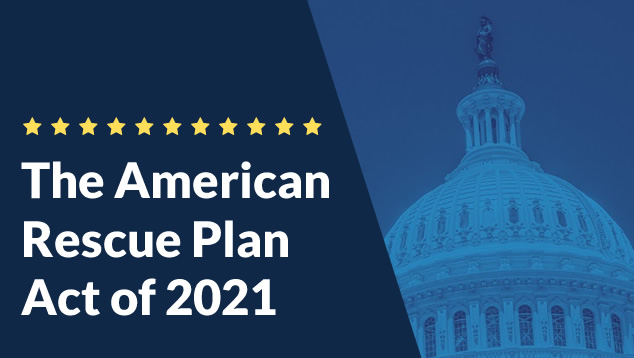How Will Stimulus Dollars Change the Early Learning Landscape? Ideas Begin to Take Shape
-The American Rescue Plan Act provides millions of dollars to states to use on early childhood education and services.
-As states begin designing their plans, a few common themes are emerging: supporting the workforce, building better infrastructure, and opening more access to services.
-Some states are taking creative approaches to community challenges, from home visiting services to sound fiscal planning.

The federal government has provided states with an unprecedented amount of money spread across three different stimulus packages: Coronavirus Aid, Relief, and Economic Security (CARES) Act in March 2020, the Coronavirus Response and Relief Supplemental Appropriations Act (CRRSA) in December 2020, and the American Rescue Plan Act (ARPA) in March 2021. The passage of each act gives stakeholders the opportunity to think strategically about investments in longer-term innovations and initiatives.
ARPA, the most recent package (and the one doling out the most amount of funds), provides multiple funding streams that can be used for a wide variety of purposes, especially in the early childhood space. There are funds specifically intended for early childhood, and other funding streams at the state and local level can be leveraged for early childhood education and the workforce. Some of the funds are listed here. (For more detail on how much Delaware is expected to receive for what purposes, visit our website.)
Explicit Early Childhood Stimulus Funds
- Child care Stabilization Grant Fund
- Child Care and Development Block Grant Fund
- Individuals with Disabilities Education Act Fund
- Community-Based Child Abuse Prevent Grant Fund
- Head Start Fund
Additional Funds to Leverage for Early Childhood
- State and Local Fiscal Recovery Fund
- Coronavirus Capital Projects Fund
- Elementary and Secondary School Emergency Relief Fund
- State Small Business Credit Initiative Fund
Opportunities for Early Childhood Education
As states decide how to spend the tremendous amount of ARPA funds over the next three to five years, advocates are urging caution. One-time infusions provide relief for providers and the workforce and are essential to recovery, but are ultimately not sustainable solutions. Additional investments in early childhood are critical to sustain the field moving forward.
Advocates, providers, members of the early learning profession, and other stakeholders locally and nationwide have recommended areas for investment. Recently, the Delaware Early Childhood Council released a memo sent to Governor Carney that outlines recommendations for use of stimulus dollars to address the early childhood workforce crisis. Other critical issues emerging in Delaware include expanding services for young children with disabilities, incentivizing off-hours and infant care, and piloting a universal home visiting model.
Additionally, departments at the federal level have released guidance on how to spend ARPA funds for early childhood, while states have begun to release plans on utilizing ARPA funds for early learning. Emerging themes include:
- Investment in the Workforce: professional advancement coaching and training, expansion of scholarships and financial support, investments in compensation and benefits, income supplements that explicitly support the child care workforce, and retention and recruitment bonuses.
- Investment in Infrastructure: upgrades to facilities and safety measures, capacity-building investments in materials and technology, purchase of supplies to meet COVID-19 regulations, low-cost loans for renovations and construction, and technical assistance on navigating these processes.
- Investment in Access and Services: prepare for a mixed-delivery system, expand capacity and access by investing in purchase of care (state subsidy for child care), pay by enrollment for subsidized care, and support wrap-around services, such as home visiting, developmental screenings, and transition services.

A Look at Other States
Related Topics: american rescue plan act, cares act, child care, coronavirus, Delaware education, early childhood education, early learning, federal stimulus